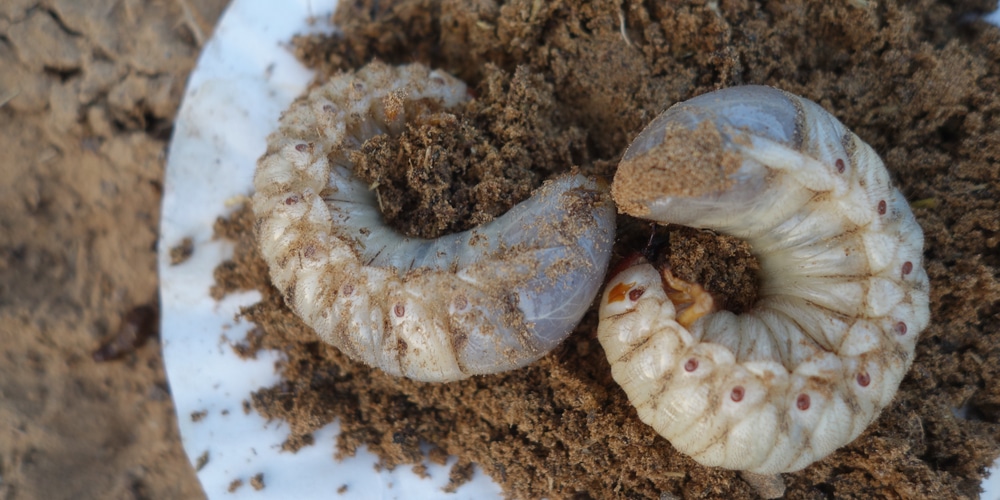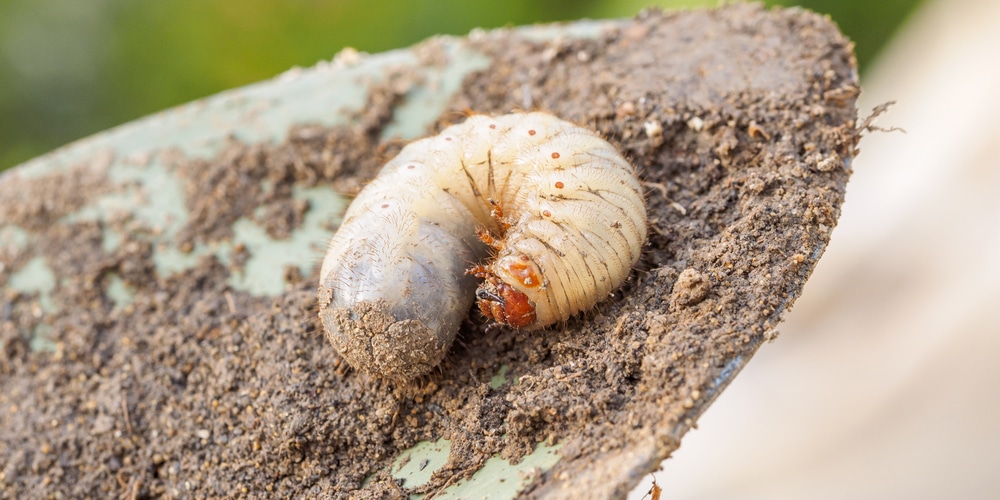Lawn grubs are an issue that strikes nearly every yard. Grubs are the larvae stage of many insects, such as Japanese and June beetles. These white worm-like insects enjoy feasting on the roots of grass and other nutrients in the soil.
Sadly, grubs can cause your grass to turn brown and die. Such destruction is often most notable in the late summer after the grubs have had time to eat enough of the grass roots to kill them. We’ll reveal what causes lawn grubs and how to lessen their impact on your grass.
Frequent Mowing

Grubs prefer living in the top two or three inches of soil. But since many people cut their grass to around the same height, which causes the roots to grow two to three inches deep, they inadvertently create the perfect living environment for grubs.
For this reason, we recommend letting your grass grow four inches tall before cutting it. That way, the roots will grow around four inches deep, past the point where grubs live.
Once you’re ready to cut your grass, leave three inches on the blades. This mowing method isn’t a fool-proof solution for grubs but significantly reduces the damage to your grass.
Wet Soil Conditions
There are fewer things that grubs love more than a moist environment, so if you take pride in keeping your lawn well-watered but suffer from a grub problem, back off on the frequency that you use your sprinkler.
Of course, mother nature sometimes has other plans. So, if you live in an area that gets a lot of rain, you might be better off treating the “root” of the problem—using organic pesticides to keep adult beetles off your property.
Too Much Aeration
You’ve likely heard that aeration is good for your lawn. Unfortunately, it’s also great for beetles. That’s because aeration creates holes in your yard, allowing oxygen and grubs easy access to your grass.
We’re not about to tell you to stop aerating your lawn, though, as this could lead to even more of its demise.
Instead, whenever you aerate, sprinkle new seeds on top of your current grass. That way, the new growth will help reduce the impact of grubs nibbling away at your lawn.
Not Enough Birds
Birds love eating grubs, so they work wonders in helping to control grub populations in lawns. But if you’re not a fan of having birds in your yard, you might have scarecrows or other scare tactics to ward them off.
If that’s the case, consider removing these anti-bird solutions, if even for a short period. Before long, you might see groups of birds flocking to your lawn to reduce your grub problem.
How To Remove Lawn Grubs
The reasons that grubs live in lawns and the strategies we shared here for reducing them are longer-term options. So if you have a significant grub problem now, there are other steps you can take to remedy it.
Some of the best and natural options for killing lawn grubs include:
- Laundry detergent and water solution
- Neem oil
- Nematodes
The first two options are insecticides, where you’ll spray the solution on your grass. In contrast, nematodes are tiny worms that enjoy eating grubs, other fungi, and bacteria that might harm your grass.
It’s possible to purchase nematodes online. Some local garden centers also sell them.
What Causes Lawn Grubs?: The Bottom Line
Grubs are a part of nature, so setting the goal of eliminating them from your yard will likely leave you frustrated.
But by knowing what causes grubs in the soil and following the strategies we shared here, you can significantly reduce the number of grubs on your lawn so that they don’t kill large patches of grass.
